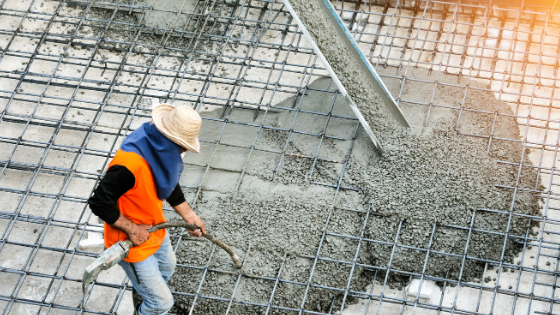Construction is an industry prone to hazards. If you work with concrete, that risk is higher than ever.
More than 250,000 people work in concrete manufacturing. Of those people, 28,000 experience job-related injuries and suffer from job-related hazards.
So, if your team works with concrete, concrete construction safety should be at the top of your list of concerns. Here are some tips to keep your workers safe from harm.
Protect Your Head and Eyes
As with other forms of construction, protecting your head and eyes is your first point of concern.
After all, if you can’t see, you’re a risk to every single person around you. And if you get hit in the head, there’s a high chance you’ll be out of commission for a while.
Just like any other construction project, concrete projects should always require workers to wear hard hats and PPE as a given. It doesn’t matter how large or small the job is. If you’re working construction, wear a hard hat. Your brain is too important to take the risk.
Then there are your eyes. The eyes are susceptible to injury at almost every stage of working with concrete. You could get concrete dust blown in your eyes, or splattering concrete could get in your eye.
If you can’t see, you’re no good to your fellow workers.
So, always be sure to wear protective glasses whenever you work with concrete. Make sure that these glasses fit and fully cover your eyes. On some jobs, it may be advisable to wear full-coverage goggles or safety glasses with side-shields. Talk to your supervisor about what you’re expected to wear on the job.
If your eyes are exposed to concrete, go to an eye wash station and flush them immediately. Then, get your eyes checked by a doctor.
Preventing Skin Hazards
Let’s be honest: concrete might make great building material, but it does not mix well with the human body, wet or dry.
Take wet concrete, for example. If it touches your skin, at best it can cause skin irritation or an allergic reaction. At worst, it could cause third-degree chemical burns. Never mind all of the chemicals and minerals hiding in concrete that are actively harmful to the human body.
To that end, you should never have exposed skin when working with wet concrete. Wear full-length pants, full-length coveralls, long sleeves, waterproof boots, and alkali-resistant gloves at all times.
Things don’t get much better with dry concrete. You could get moderate irritation, or you could get painful skin cracking as a result of chemical burns. Again, never leave your skin exposed when working with concrete.
If you are exposed to concrete, wet or dry, go to a washing station and use clean, cold water and soap to wash the affected area as soon as possible.
Respiratory Safety
If you think concrete is bad for your skin, it’s even worse if you breathe it in.
That’s because concrete contains crystalline silica, a mineral commonly used in building materials. It’s known to cause silicosis (an incurable lung condition that occurs when silica in the lungs causes the formation of scar tissue, making it harder for your lungs to take in oxygen).
It’s also been linked to lung cancer, chronic obstructive pulmonary disease, kidney disease, and some autoimmune disorders.
So, don’t breathe the stuff in.
At a minimum, you should always use a respirator when working with concrete to minimize dust inhalation. Don’t hang around the site during your breaks, and always eat and drink in dust-free areas.
Practicing Concrete Construction Safety
We know that concrete construction safety is just one of the many things your company has to worry about. That’s why we’re proud to offer top-of-the-line construction safety software solutions, no matter how big or small the problem.
Construction Safety Resources
